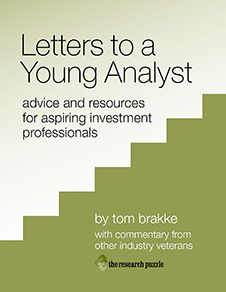
- Thursday, September 25th, 2008
- this is fatal
-
On Wednesday, the Wall Street Journal published an article about the Reserve Primary Fund, and Anthony CarfangTreasury Strategies | Carfang is a partner at this firm. The “resource library” link on the firm’s site looks to have a number of items that are worthy of review. was quoted as saying “I have to believe that this is fatal.” The “this” to which he referred was the “breaking of the buck” by the fund and the subsequent deluge of redemptions, recriminations, and lawsuits.Disclosure: I have a tiny holding in this fund through an intermediary that has filed a suit against Reserve.
The Journal pieceWall Street Journal | In the print edition, the headline, “A Preacher of Prudence Lost His Religion in Breaking Buck,” was a great set up for this piece that’s destined for use as a case study. outlines the tragic tale: The founder of the money-market fund industry, Bruce Bent, is chairman and CEO of Reserve.Reserve Management | Note the service mark, “A Tradition of Financial Innovation.” For years he had cautioned those funds and folks who chased yields, but somehow allowed his firm to succumb to the same temptation, at just the wrong time. It is the sudden collapse from the very reputational risk that he had warned about that makes the story so operatic.
Alas, Reserve is not the only firm on life support right now. In other cases, it is easier to feel sorry for those trying to hang on, even if they are viewed as nefarious by some observers. Imagine managing a strategy that relies on shorting stocks — let’s say financial stocks — when a new regulation appears on the scene that prevents you from doing so. Sure, there may be ways around the ban, and perhaps the exploration of them will actually lead to the discovery of techniques that help you prosper in the future, but it is certainly not business as usual. You know everything has changed when the question needs to be asked, “Is this fatal?”
There are other stories like this — accounts frozen at prime brokers, terms of business suddenly changing, money that looked slow reaching warp speed as it flies out the door — that imperil a variety of firms. Perhaps some of the eventualities were anticipated, but were assigned a very low probability of occurring, and the cost of avoiding them was very high. It is hard to fault such logic.
That is not the case with Reserve, where there was one big risk to its business, and it decided that there was no harm in flirting with it a little. The lessons learned from such a foray in what is a traditionally staid corner of the investment world apply broadly to firms of all types:
Know who you are and what you are trying to do, and make sure everyone else knows it too, for a product properly described and honestly sold is stickier than one that is not.
Carefully examine and report to your clients the low-probability events that could threaten the existence of your firm, even if it makes for a tougher sale. Especially in today’s environment, you might actually win some business by being so forthright.
Regularly review for evidence of “drift,” the pernicious movement away from the shared and advertised beliefs that define your firm and its strategies. If you have moved from where you were and don’t want to go back, communicate that fact to all concerned. (Otherwise go back.) The failure to do so is like leaving a clot in the system and waiting for the inevitable heart attack.
